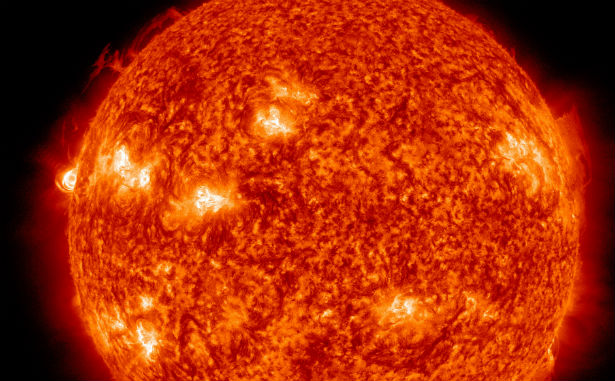Major eruption – Active region around east limb produced powerful X1.7 solar flare

A new active region behind east limb produced powerful X1.7 solar flare on May 13, 2013 at 02:15 UTC. This event was associated with strong R3 Radio Blackout Alert, Type II Radio Emission and 10 cm Radio Burst.
This was the strongest solar flare of the year so far.
.png)
Strong R3 radio Blackout alert signals possible wide area blackout of HF radio communication, loss of radio contact for about an hour on sunlit side of Earth and degradation of low-frequency navigation signals for about an hour.
Type II Radio Emission occur in association with eruptions on the sun and typically indicate a coronal mass ejection is associated with a flare event.
ALERT: Type II Radio Emission
Begin Time: 2013 May 13 0210 UTC
Estimated Velocity: 2347 km/s
.jpg)
NASA's STERO twin probes recorded eruption of X1.7 solar flare on May 13, 2013 (Credit: NASA/STEREO)
A 10cm radio burst indicates that the electromagnetic burst associated with a solar flare at the 10cm wavelength was double or greater than the initial 10cm radio background. This can be indicative of significant radio noise in association with a solar flare. This noise is generally short-lived but can cause interference for sensitive receivers including radar, GPS, and satellite communications.
SUMMARY: 10cm Radio Burst
Begin Time: 2013 May 13 0208 UTC
Maximum Time: 2013 May 13 0219 UTC
End Time: 2013 May 13 0222 UTC
Duration: 14 minutes
Peak Flux: 320 sfu
Latest Penticton Noon Flux: 147 sfu
This new region is currently very active and it should begin to rotate into view within the next 24 hours. Considering its location any associated Coronal Mass Ejection (CME) should be directed away from Earth.
This new active region already produced two moderate M-class solar flare, registered as M1.9 at 20:31 UTC and M1.2 at 22.:44 UTC.
.jpg)
There are currently 10 numbered regions on the disk. Regions 1745 and 1746 have Beta-Gamma magnetic configuration and are capable of producing more strong flares, and six more active regions developed Beta magnetic field and are coming into center of the disk in the coming days.
Follow activity on the Sun in real-time on our Space weather station

Update 12:20 UTC:
The same region that produced X1.7 flare today erupted with another flare peaking at 12:03 UTC. The latest event was registered as M1.3.
Update 17:00 UTC:
At 15:48 UTC, on May 13, 2013, a second major eruption started. Peak time was reached at 16:05 UTC and was measured as X2.86 solar flare. The source was again, an active region located around the eastern limb.
Featured image: NASA – SDO

Commenting rules and guidelines
We value the thoughts and opinions of our readers and welcome healthy discussions on our website. In order to maintain a respectful and positive community, we ask that all commenters follow these rules.